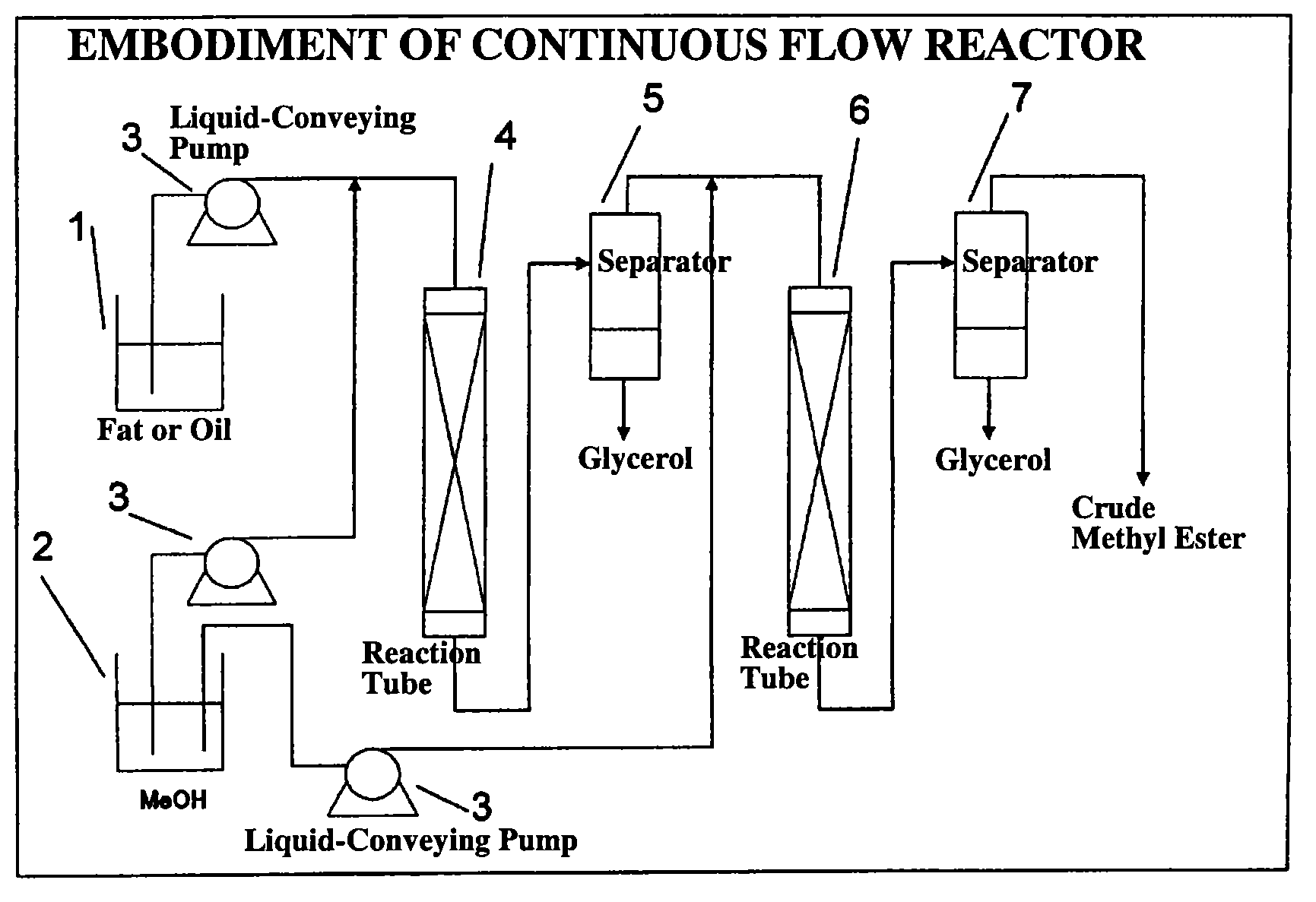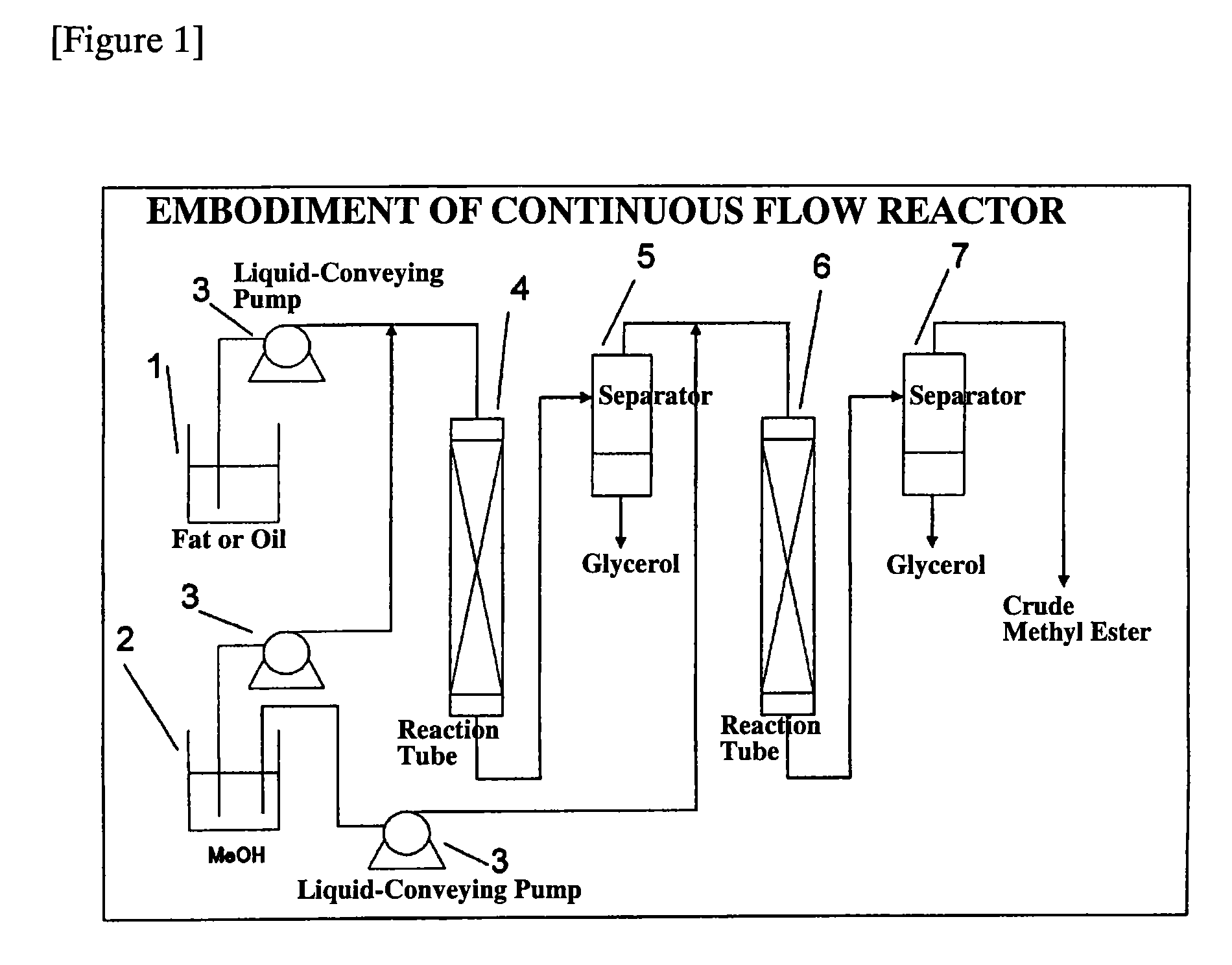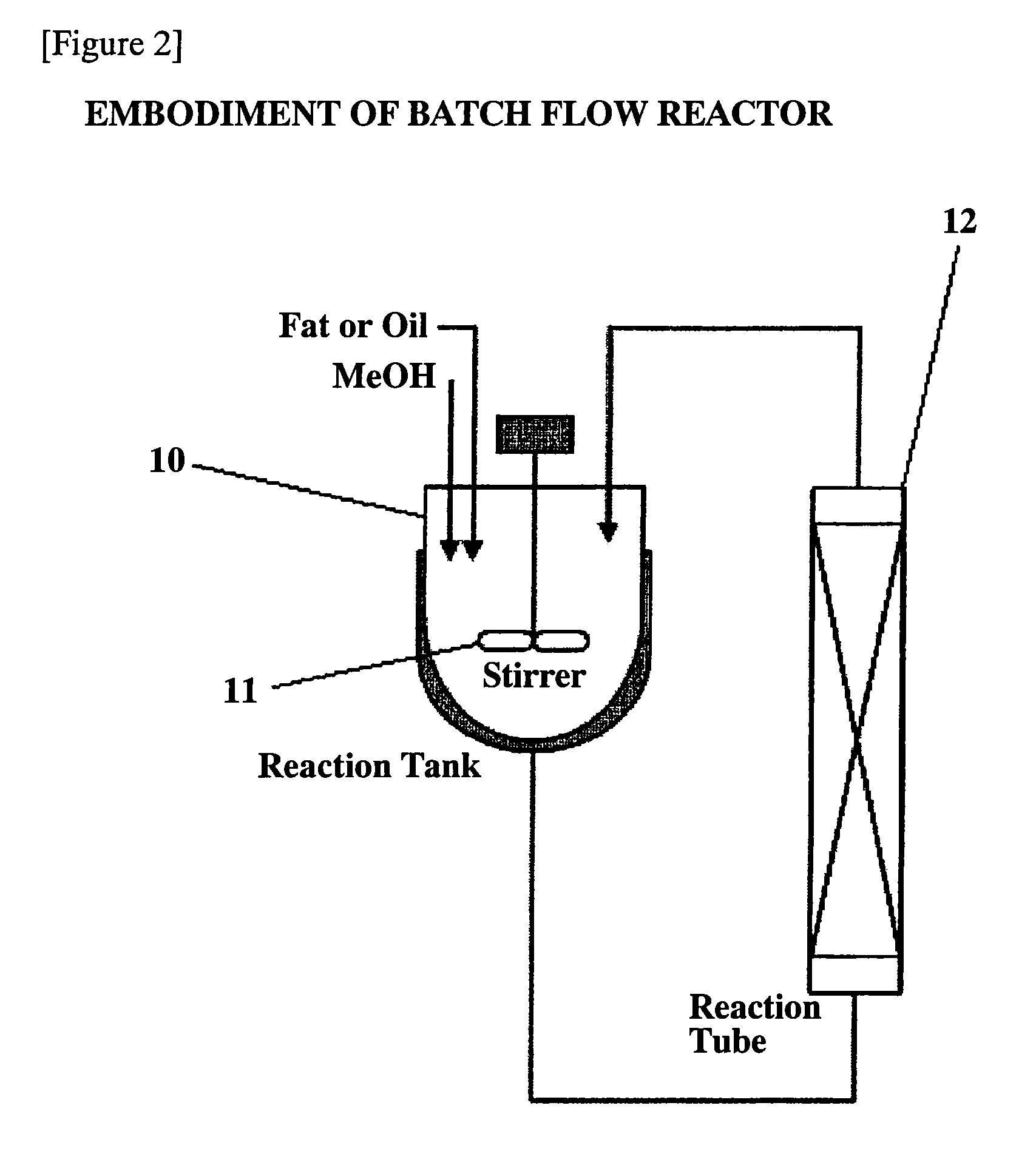Process for production of fatty acid alkyl ester and production apparatus for fatty acid alkyl ester
a technology of alkyl ester and fatty acid, which is applied in the direction of fatty acid chemical modification, physical/chemical process catalysts, fatty-oils/fats refining, etc., can solve the problems of high solubility of catalyst in organic solvent, unsuitable for practical use energetically or process cost-wise, and high alkali-containing wastewater. , to achieve the effect of reducing the number of steps, and high purity
- Summary
- Abstract
- Description
- Claims
- Application Information
AI Technical Summary
Benefits of technology
Problems solved by technology
Method used
Image
Examples
embodiment 1
[0048]A first embodiment of this invention will be explained. The first embodiment is an embodiment where a batch reaction was carried out with a tank reactor. FIG. 3 is a graph showing the change with time in an yield of an ester (expressed by percentage of weight ratio of a methyl ester of a fatty acid in a reaction product sample), showing a comparison between a base catalyst subjected to an activation treatment and a base catalyst without the activation treatment.
[0049]CaO 0.01 g without Activation (Shown as “0.01 g” in FIG. 3)
[0050]A 50 ml eggplant-shaped flask equipped with a reflux condenser was charged with 0.01 g of calcium oxide as a catalyst, 3.9 g of methanol, 15 g of a salad oil, and the contents were stirred with a magnetic stirrer at a reaction temperature of 60° C. A small amount of the mixture was sampled in order to monitor the progress of the reaction, and methanol was removed under reduced pressure, and an ester layer was separated by centrifugation. About 100 mg...
embodiment 2
[0072]A second embodiment of this invention will be explained. This is also an example where a batch reaction was carried out with a tank reactor. A reaction was carried out at 60° C. using 15 g of a salad oil as a fat or oil, and methanol as an alcohol. As the base catalyst, one prepared by stirring 0.005 g of calcium oxide in methanol for 1.5 hours to carry out activation was used. A test was conducted by changing a weight ratio of the fat or oil to methanol to the three conditions (100:26), (100:50), and (100:100). In addition, as a comparative example, a test was conducted in the same manner using 0.005 g of potassium hydroxide (KOH). FIG. 7 is a graph showing the change with time in an yield of an ester in the second embodiment.
[0073]In a case where calcium oxide is used, a higher reaction rate and a higher yield of an ester are accomplished than those of a case where potassium hydroxide is used in any of the fat or oil / methanol ratios. In addition, in a case where potassium hy...
embodiment 3
[0074]A third embodiment of this invention will be explained. This is also an example where a batch reaction was carried out with a tank reactor. The first and second embodiments are embodiments where the reaction was carried out only once with a reaction tank, and even in these embodiments, an alkyl ester of a fatty acid of a purity such that an yield of an ester was 80% or more was already obtained. In this embodiment, in order to increase an yield of an ester, a by-product glycerol was removed after a first reaction, and a second reaction was carried out.
[0075]An eggplant-shaped flask was charged with 0.5 g of calcium oxide as a catalyst and 19.5 g of methanol, and the contents were stirred with a magnetic stirrer at room temperature for 0.5 hours. Thereafter, 75 g of a salad oil was added thereto, and a reflux condenser was attached to the flask, and the contents were stirred at a reaction temperature of 60° C. for 4 hours. Methanol was removed under reduced pressure from the li...
PUM
| Property | Measurement | Unit |
|---|---|---|
| particle size | aaaaa | aaaaa |
| pressure | aaaaa | aaaaa |
| temperature | aaaaa | aaaaa |
Abstract
Description
Claims
Application Information
 Login to View More
Login to View More - R&D
- Intellectual Property
- Life Sciences
- Materials
- Tech Scout
- Unparalleled Data Quality
- Higher Quality Content
- 60% Fewer Hallucinations
Browse by: Latest US Patents, China's latest patents, Technical Efficacy Thesaurus, Application Domain, Technology Topic, Popular Technical Reports.
© 2025 PatSnap. All rights reserved.Legal|Privacy policy|Modern Slavery Act Transparency Statement|Sitemap|About US| Contact US: help@patsnap.com



